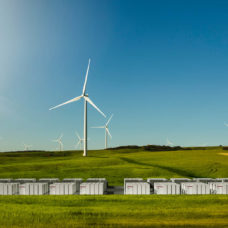This new method of methane production could provide energy-producing hydrogen with a low-emission bonus.

Cleaning up our act is one of the biggest challenges of Industry 4.0.
Look, the past couple of centuries saw the rise of factories and mass production. That was great, and it helped advance us as a species, but it was also very dirty–environmentally speaking, anyways.
Now that we know more about environmental science, the idea that we could be contributing to environmental harm weighs heavily on the social consciousness.
But while we strive to understand the problem, we can’t find a quick fix for it. It seems sometimes like curbing greenhouse gas emissions is an impossible race against production and progress.
As I type this, we have production-based initiatives on the horizon like Made in China 2025. Simply put, the human race is going to be making a lot of stuff in the near future. And while that could mean more pollution and environmental damage, it doesn’t have to.
More production doesn't have to equal more pollution. #cleanenergy #methaneconversionClick To TweetWe have research into alternative energy sources to thank for that change in the production to pollution ratio.
Alternative energy isn’t easy, though, and while some renewables are cheap and getting cheaper, their power output doesn’t quite cut it. Thus far, we haven’t really bridged the gap between the energy output vs. the cost of using fossil fuels and the efficiency of alternative energies. But hey, that isn’t to say that we aren’t close to finding one.
As the environment gets warmer, many look to carbon dioxide as the main culprit, and rightly so. We burn more fuel than ever before, so we emit more CO2 than ever. There’s another greenhouse gas that shouldn’t get overlooked: methane.
Methane is a natural gas that is cheap, but it is also more potent and abundant than CO2 by a wide margin. Luckily for us, it may also useful for bridging the gap between fossil fuels and alternative energy.
No CO2, no Problem
There are plenty of great ideas when it comes to using methane.
For example, one idea that we reported on was to use a one-step method to convert methane into liquid fuel. It’s an idea that could provide cheap energy, but converting it would still form more CO2.
Recently, researchers at UC Santa Barbara have been studying new methods to convert methane into clean-burning hydrogen. The best part? There is no formation of CO2 with their process.
To be clear, it’s not a new development to convert methane into hydrogen. Steam methane reforming (SMR) is the tried and true method used by commercial industries. SMR has an issue with energy consumption and CO2 production, though. Not only that, but it isn’t cost effective enough to provide small-scale production of things like fuel cell vehicles.
With this new method, however, that might change. Now, converting methane into hydrogen could be done in a way that produces solid carbon that can be stored (or potentially used) indefinitely.
How do they do it? According to Eric McFarland, a professor of chemical engineering at UCSB, it only takes a single step.
“You introduce a bubble of methane gas into the bottom of a reactor filled with this catalytically active molten metal. As the bubble rises, the methane molecules hit the wall of the bubble and they react to form carbon and hydrogen,” says McFarland.
Transitioning to Alternative Energy Sources
The bridge couldn’t come at a better time, and I’m speaking in the social and economic sense.
Climate change is still very much in the zeitgeist of our time. Everyone’s mind seems to be on clean energy, as shown by our willingness to push fossil fuels aside ten years ahead of schedule.
Oh, and don’t forget, there is a ton of money to be had when it comes to renewable energy. 2016 alone saw an increase of 10 million jobs in that sector, and the number is still rising.
So, how does this new development in methane-to-hydrogen conversion work out for our future? Well, let me refer back to fuel cell vehicles.
Current methane production methods don’t lend themselves to creating enough hydrogen for fuel cell vehicles. At least, not in a cost effective manner.
With this new method, however, we may start seeing some of Elon Musk’s autonomous trucks carrying cargo across the roadways. Just think about how big the shipping industry is. Turning transport fleets into zero-emission machines would take a huge bite out of our overall greenhouse gas emissions.

I think the biggest benefit, however, is that we’re taking something that’s abundant, and making it even more useful than it already is. This just goes to show you how resourceful we have become when it comes to clean energy.
Methane is abundant, and now we can potentially make it as useful as sources like coal or oil. With a cheap source of effective energy, we may have just what we need to tide us over until more renewable alternative energy sources can be found.



















Sounds promising, what for would the Carbon take?